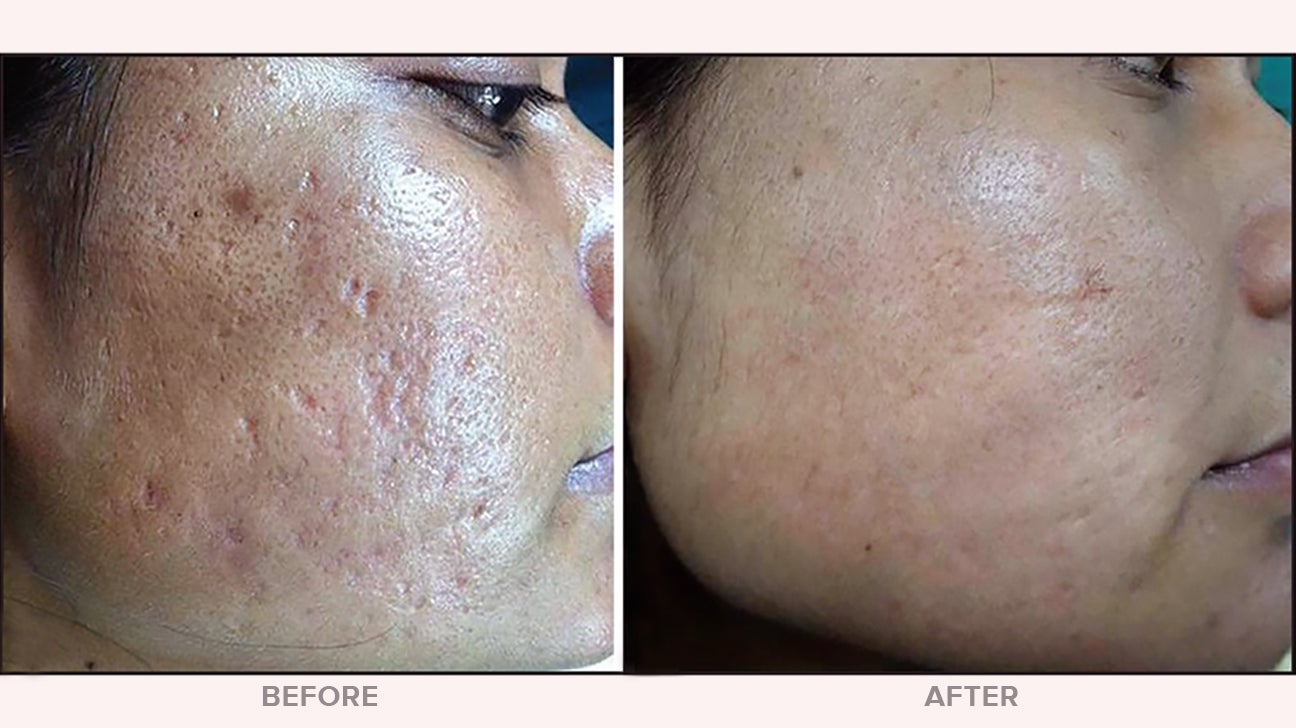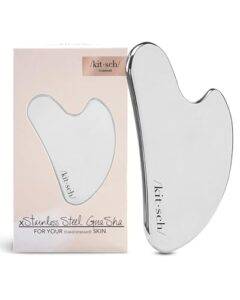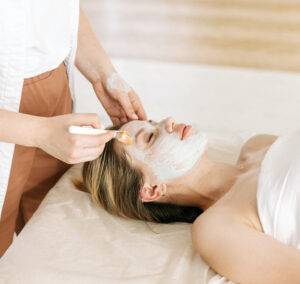This Site Is A Participant In The Amazon Services LLC Associates Program. We may earn money or products from Amazon or the companies mentioned in this post.
Microdermabrasion is a skincare treatment that involves removing dead skin cells from the top layer of the skin. This treatment is good for reducing the appearance of fine lines, dark spots, acne scars, and sun damage.
It also promotes cell renewal and collagen production, resulting in smoother, softer, and brighter skin. Microdermabrasion is a minimally invasive procedure that uses a handheld device to exfoliate the skin, revealing a more youthful and radiant complexion. Apart from improving the appearance of skin, it can also help improve blood circulation and skin texture, making it a popular choice for people looking to improve their overall skin health.
In this article, we will explore in detail what microdermabrasion is good for and how it can benefit your skin.

Credit: www.healthline.com
Understanding Microdermabrasion
Definition Of Microdermabrasion
Microdermabrasion is a minimally invasive cosmetic treatment that involves exfoliating the surface layer of the skin using tiny crystals or a diamond-tipped wand. This treatment has been around since the 1980s and is popular due to its non-invasive nature and effectiveness in rejuvenating the skin’s appearance.
How Microdermabrasion Works
Here are some key points to know about how microdermabrasion works:
- The treatment removes dead skin cells from the top layer of the skin, which can help to improve the skin’s texture and clarity.
- The skin’s surface is exfoliated using tiny crystals or a diamond-tipped wand, which is passed over the skin in a gentle, circular motion.
- The treatment stimulates the production of new skin cells, which can help to promote collagen production and improve the skin’s elasticity.
- Microdermabrasion is typically performed on the face, but it can also be used on other areas of the body, such as the hands, neck, and back.
Types Of Microdermabrasion
There are two main types of microdermabrasion: crystal and diamond:
- Crystal microdermabrasion involves blasting tiny crystals onto the skin’s surface, which are then suctioned back up along with the dead skin cells.
- Diamond microdermabrasion uses a diamond-tipped wand to exfoliate the skin. This type of microdermabrasion is gentler than crystal microdermabrasion and is better suited for sensitive skin.
Both types of microdermabrasion have their advantages and disadvantages, so it’s important to discuss your skin concerns with a licensed skincare professional to determine which treatment is best suited for your skin type and needs.
Benefits Of Microdermabrasion
Microdermabrasion is a popular cosmetic procedure that involves exfoliating the skin to improve its overall appearance. This treatment involves the use of a special device that sprays tiny crystals across the skin’s surface, removing dead skin cells and promoting the growth of new, healthy skin cells.
Microdermabrasion provides a multitude of benefits for the skin, including improved texture and reduced signs of aging and damage.
Improved Skin Texture
Microdermabrasion provides a noninvasive way to improve the texture of your skin. By removing the outermost layer of dead skin cells, this treatment can help to smooth out rough patches and create a more even skin tone. Microdermabrasion can also promote collagen production, which can help to firm up sagging skin and reduce the appearance of fine lines and wrinkles.
- Removes dead skin cells, revealing brighter and smoother skin.
- Reduces the appearance of fine lines, wrinkles, and rough patches.
- Smoothes out skin tone and texture.
Minimized Appearance Of Fine Lines And Wrinkles
One of the most significant benefits of microdermabrasion is its ability to reduce the appearance of fine lines and wrinkles. By promoting the growth of new skin cells, microdermabrasion can help to make fine lines and wrinkles less noticeable. Additionally, this treatment can help to stimulate collagen production, which can help to firm up the skin and reduce sagging.
- Promotes the growth of new, healthy skin cells, which helps to reduce the appearance of fine lines and wrinkles.
- Stimulates collagen production, which can help to firm up the skin and reduce sagging.
Reduced Hyperpigmentation And Sun Damage
Microdermabrasion can help to reduce the appearance of hyperpigmentation and sun damage on the skin. By removing the outermost layer of dead skin cells, this treatment can help to fade dark spots and improve overall skin tone. Additionally, microdermabrasion can help to stimulate blood flow to the skin, which can help to reduce inflammation and redness.
- Reduces the appearance of hyperpigmentation and sun damage.
- Fades dark spots and improves overall skin tone.
- Stimulates blood flow to the skin, which can help to reduce inflammation and redness.
Reduced Acne And Acne Scarring
Microdermabrasion can also be beneficial for those who struggle with acne or acne scarring. By removing dead skin cells and unclogging pores, this treatment can help to prevent future breakouts and reduce the appearance of existing acne scars. Microdermabrasion can also help to improve the effectiveness of skincare products designed to treat acne.
- Removes dead skin cells and unclogs pores, preventing future breakouts.
- Reduces the appearance of existing acne scars.
- Improves the effectiveness of skincare products designed to treat acne.
Aids In Skincare Product Penetration
Another significant benefit of microdermabrasion is that it can help to improve the penetration of skincare products. By removing the outermost layer of dead skin cells, this treatment can help to make it easier for skincare products to penetrate the skin deeply.
This can help to improve the effectiveness of these products and make them more effective at addressing skin concerns.
- Improves the penetration of skincare products.
- Makes skincare products more effective at addressing skin concerns.
Who Can Benefit From Microdermabrasion?
Microdermabrasion is an effective facial treatment that can help make your skin look firmer, brighter, and healthier. But, who can benefit from this skincare procedure? Let’s dive into the details and explore which skin types, age ranges, and skin concerns microdermabrasion is good for.
Skin Types Appropriate For Microdermabrasion
Microdermabrasion is suitable for most skin types, including:
- Oily skin
- Dry skin
- Sensitive skin
- Normal skin
- Combination skin
The procedure works by exfoliating the top layer of your skin, removing dead skin cells, and revealing fresh, smooth, and glowing skin. However, if you have any open wounds, active acne, or skin infections, microdermabrasion may not be suitable for you.
It’s always best to consult with a dermatologist or a skincare professional beforehand.
Age Ranges For Microdermabrasion
Microdermabrasion can benefit people of all ages. However, it’s recommended for individuals who are 14 years and older. Younger teenagers may have sensitive skin that requires extra precautions and care. On the other hand, older adults can use microdermabrasion to target aging and hyperpigmentation issues, such as fine lines and wrinkles, age spots, and sun damage.
Individuals With Specific Skin Concerns
Microdermabrasion can help address many common skin concerns, including:
- Acne scars
- Fine lines and wrinkles
- Age spots and hyperpigmentation
- Dull skin
- Uneven skin tone and texture
The procedure’s exfoliating action stimulates collagen production and improves skin’s elasticity, making it an excellent option for those worried about skin aging. In addition, microdermabrasion can be used to reduce the appearance of acne scars and dark spots, making it perfect for those with acne-prone skin.
However, it’s essential to note that microdermabrasion may not work for everyone, and it’s always advisable to discuss your concerns with your dermatologist.
Microdermabrasion is a popular cosmetic procedure that can improve the look and feel of your skin. It’s suitable for most skin types and ages and can help address many common skin concerns. If you’re considering getting microdermabrasion, it’s crucial to choose a reputable skincare professional and consult with them to see if the procedure is appropriate for your skin type and condition.
What To Expect During A Microdermabrasion Treatment
Microdermabrasion is a non-invasive, skin resurfacing treatment that can help improve the overall texture and appearance of your skin. Before booking your first microdermabrasion session, it’s important to understand what the treatment process entails. Here’s what to expect:
Preparation For The Treatment
Before your microdermabrasion appointment, it’s important to make sure your skin is clean and free of any makeup, lotions, or other topical products. Here are some things to keep in mind:
- Avoid using any harsh or grainy exfoliating products for at least a week before your appointment.
- If you’re prone to cold sores, make sure to let your technician know so they can take extra precautions during the treatment.
- Depending on the type of microdermabrasion treatment you’re having, you may need to avoid sun exposure for a certain amount of time beforehand.
The Microdermabrasion Treatment Process
The actual microdermabrasion treatment process is relatively straightforward and usually takes anywhere from 30 to 60 minutes. Here’s what typically happens:
- Your technician will clean your skin thoroughly and may apply a numbing cream to help minimize any discomfort.
- A handheld device will be used to spray tiny crystals onto your skin, which will help exfoliate the top layer of dead skin cells.
- As the crystals are sprayed, they will be suctioned away using a vacuum-like tool, which can help stimulate circulation and improve lymphatic drainage.
- Depending on your skin type and desired results, your technician may focus on certain areas more than others, or use different types of crystals or suction settings to achieve the best outcome.
Aftercare Instructions
After your microdermabrasion treatment, it’s important to follow some basic aftercare instructions to help your skin recover and avoid any potential complications. Here are some things to keep in mind:
- Avoid using any harsh or highly fragranced products on your skin for at least a day or two after your treatment.
- Apply a gentle, soothing moisturizer to your skin regularly to help keep it hydrated and prevent dryness or flakiness.
- Protect your skin from sun exposure by wearing a hat or using a high spf sunscreen as directed by your technician.
- Avoid touching or picking at your skin, as this can increase the risk of infection or scarring.
- Depending on your skin type and the intensity of your treatment, you may need to wait a certain amount of time before applying makeup or other products to your skin again.
Overall, microdermabrasion can be a highly effective way to improve the overall health and appearance of your skin. By following these tips and talking to your technician about your specific needs and concerns, you can help ensure that your microdermabrasion treatment is a success.
Comparing Microdermabrasion To Other Skincare Treatments
Microdermabrasion is a popular skincare treatment that helps improve the appearance of skin by removing dead skin cells, reducing fine lines, and improving overall texture. But how does it compare to other skincare treatments? In this section, we will compare microdermabrasion to chemical peels, microneedling, and laser treatments.
Chemical Peels
Chemical peels are another popular skincare treatment that involves applying a chemical solution to the skin to remove dead skin cells and promote cell growth. Here’s how chemical peels compare to microdermabrasion:
- Chemical peels are more invasive than microdermabrasion, meaning they can cause more significant downtime and side effects.
- Chemical peels are better for treating more severe skincare concerns, such as deep wrinkles or acne scarring.
- Microdermabrasion is generally more affordable than chemical peels.
Microneedling
Microneedling is a skincare treatment that involves using a device with tiny needles to create small punctures in the skin. Here’s how microneedling compares to microdermabrasion:
- Both treatments work to improve the appearance of skin by prompting cell turnover and collagen production.
- Microneedling is more invasive than microdermabrasion and may require more downtime for recovery.
- Microdermabrasion is less likely to cause discomfort than microneedling.
Laser Treatments
Laser treatments, such as laser resurfacing or laser hair removal, rely on focused light energy to target skin cells. Here’s how laser treatments compare to microdermabrasion:
- Laser treatments are more invasive than microdermabrasion and may require more downtime and cost more.
- Laser treatments can be more effective for treating pigmentation issues or unwanted hair growth.
- Microdermabrasion is less likely to cause scarring or other significant side effects than laser treatments.
Microdermabrasion is an effective and affordable skincare treatment that can provide noticeable improvements in texture and appearance. However, for more severe skincare concerns, chemical peels or laser treatments may be more appropriate options. Always consult a skincare professional for personalized advice on which treatment is best for you.
Frequently Asked Questions For What Is Microdermabrasion Good For?
What Is Microdermabrasion?
Microdermabrasion is a minimally invasive cosmetic procedure that removes dead skin cells from the uppermost layer of the skin.
How Does Microdermabrasion Work?
Microdermabrasion works by using a special device that sprays tiny crystals across the face, abrading the top layer of the skin and suctioning off the dead cells.
Is Microdermabrasion Painful?
No, microdermabrasion is not painful. It may feel like light scratching, but it shouldn’t hurt. Some people even describe the sensation as relaxing.
What Are The Benefits Of Microdermabrasion?
Microdermabrasion can minimize fine lines, reduce the appearance of acne scars, improve skin texture and tone, unclog pores, and promote the growth of new collagen.
Who Is A Good Candidate For Microdermabrasion?
Anyone who is looking for a non-invasive way to improve the texture, tone, and appearance of their skin can benefit from microdermabrasion. It is suitable for all skin types and colors.
Conclusion
Based on the information above, it is evident that microdermabrasion is an effective skin resurfacing treatment. It is a quick and non-invasive procedure that can improve the appearance of fine lines, wrinkles, acne scars, and hyperpigmentation. Microdermabrasion also increases collagen production, which leads to firmer and smoother skin.
Moreover, it can be done on any skin type and requires minimal downtime. However, it is important to note that microdermabrasion should not be done on inflamed or infected skin, and those with active acne should wait until their skin clears up before undergoing the procedure.
Overall, microdermabrasion is a great option for individuals looking to improve the appearance and health of their skin without undergoing a more invasive procedure. Consult with a qualified provider to see if microdermabrasion is right for you.

Amelia Varley is a professional beauty blogger and freelance writer with a passion for all things skincare, makeup, and holistic wellness. With years of experience in the beauty industry, Amelia shares expert tips, product reviews, and innovative beauty routines with her readers. Her writing is driven by a desire to empower people to look and feel their best through mindful beauty practices. When she’s not writing, Amelia enjoys experimenting with the latest beauty trends and exploring the connection between self-care and confidence.





